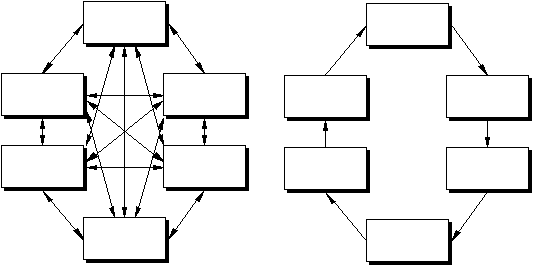The NSTA Standards for Science Teacher Preparation offer guidance for science teacher preparation programs. The NSTA Standards are coordinated with both The Interstate New Teacher Assessment and Support Consortium (INTASC) and The National Board for Professional Teaching Standards (NBPTS). The NSTA Standards have also been adopted by The National Council for Accreditation of Teacher Education (NCATE) for use in evaluating and accrediting science teacher preparation programs. The NSTA Standards more directly target secondary science teacher preparation than elementary teacher preparation, though these ten Standards are relevant for all who teach science from pre-k to college, graduate and work place education, and for the educators who prepare teachers.
Science for All
Again, one of the several premises of the National Science Education Standards and Project 2061 is encapsulated in the phrase Science for All. This is a demanding goal. Many changes are needed in the education of science teachers if this goal is to be achieved, requiring increased sophistication in attitudes, professional knowledge, and skills in both teaching and interpersonal interactions.
Only a portion of science teachers have developed the knowledge, skills, and attitudes that are compatible with the goal of Science for All. Further, many science educators have little experience in helping prospective and practicing science teachers increase their capability of teaching all students science.
In order for science educators to be able to help science teachers develop the capabilities for teaching science for all, several actions are needed:
- Relevant research should be analyzed and recommendations from it made available to colleagues across the nation.
- Where research is needed to fill gaps in our knowledge about teaching science effectively to all students, science educators, psychologists, sociologists, scientists, and science teachers should join forces to design, conduct, and disseminate findings from their research.
- Efforts need to be expanded to foster attitudes among scientists, science educators, and science teachers that scientific literacy is achievable for a broad spectrum of the population.
- Scientists, science educators, and science teachers should work diligently to develop interpersonal skills that will help to engage all students in learning science.
- Science educators and science teachers should work together to develop the professional knowledge and skills needed to foster scientific literacy among all students.
- Science educators, science teachers and scientists need to model a kind of teaching that encompasses all of the ten standards described in the NSTA Standards for Science Teacher Preparation.
Science for All must become more than simply a slogan. It is essential that science educators lead others in the science education community in giving substance and positive action to this goal. The development of the NSTA Standards for Science Teacher Preparation is a step toward meeting these challenging goals.
Figure 1: Map of NSTA Standards for Science Teacher Education
Connections Among Standards
Figure 1 maps each of the ten standards, showing important connections among the standards. Each of the ten Standards, the brown text in the blue background, is linked to the descriptive text for that standard. The arrows included obviously do not represent every possible connection, but ones that we believe are important. The links shown should serve as a catalyst for conversations about what links are important, and what links are missing. Reflecting on possible linkages is more important than critiquing the linkages we have suggested.
For a discussion on the use of color in the schematic, click here.
Figure 3. Extreme network structures. (a) is maximally connected and displays no organization. (b) is minimally connected with high organization. Ulanowicz (1986) as cited in Pahl-Wostl (1995).

(a) (b)
The Standards portray parts of the system of science teacher preparation. This system is complex, far more complex than the diagram that is central to this text. Like in any complex system, "the whole is different from, not greater than, the sum of its parts." (Jervis, 1997)
New teachers should enter the classroom well grounded in each of the ten standards explicated in the NSTA Standards for Science Teacher Preparation. To truly understand these Standards, each Standard must be understood in relation to the others. This is most important as it relates to pedagogy and content. Pedagogical skill without content understanding is meaningless. For the teacher, content understanding without pedagogical skill is fruitless.
The Standards:
Content, Nature of Science, Inquiry, Context of Science, Pedagogy, Science Curriculum, Social Context, Professional Practice, Learning Environments, and Assessment
